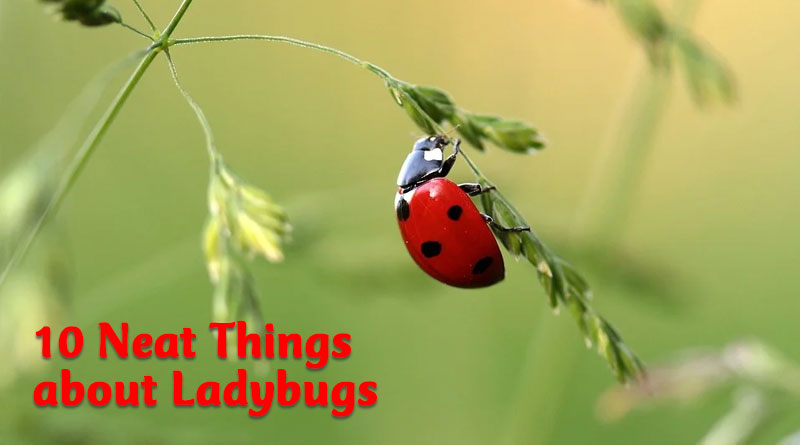About Ladybugs

1. Coccinellidae.
There are about 5,000 species of ladybug worldwide, but only three species go after plants and they are very specific. The Mexican bean beetle, the squash beetle and a leaf eating ladybug in Australia are plant eaters. The rest eat soft bodied bugs such as aphids, scales, spider mites, leaf hoppers, even the eggs of the potato beetle and the corn borer. One variety, orange with white spots, eats fungus.
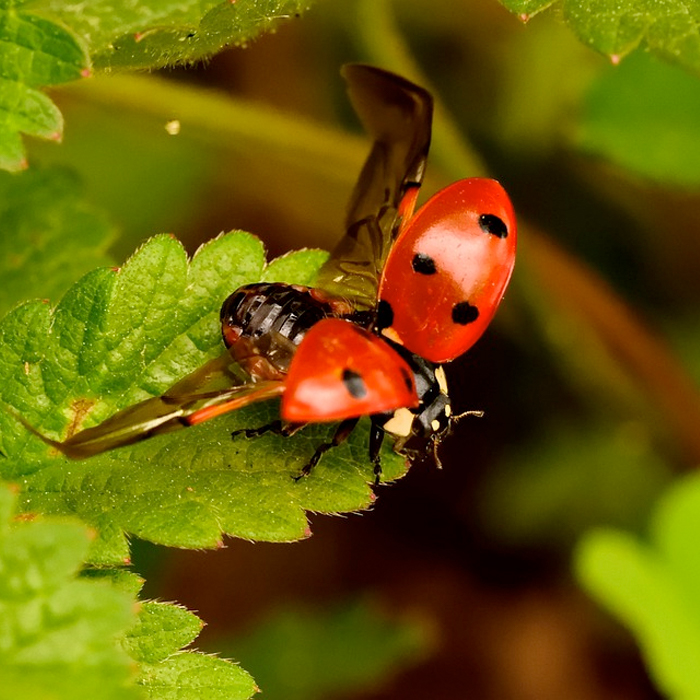
2. What’s in a name?
Ladybirds, ladybugs, lady beetles; they are all named for the Virgin Mary who is often pictured in a red dress (when she isn’t in blue). In the Middle Ages, an infestation of aphids was killing crops, when lo and behold, a red horde came and saved the day. The red wings, called elytra, represent the Lady’s dress and the black spots her joys and sorrows. The elytra are made of chitin, which is the material your fingernails are made of.
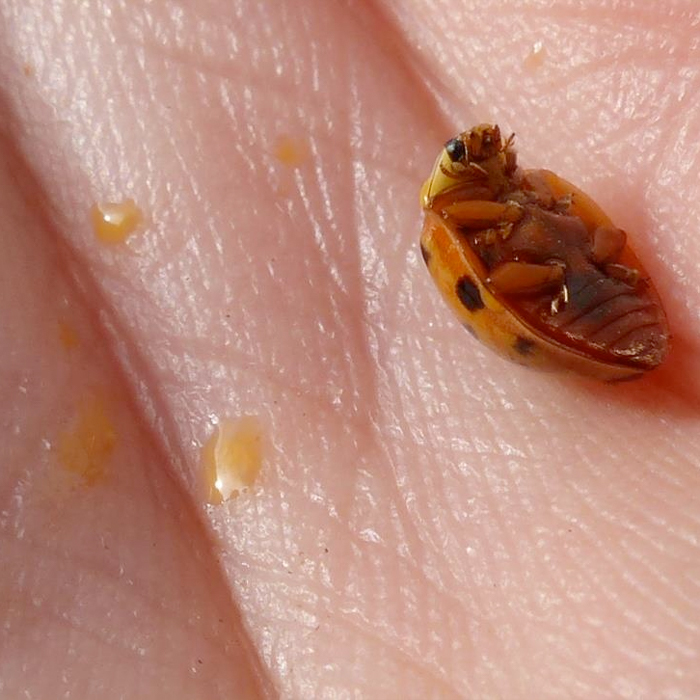
3. Red stands for yucky!
The ladybug has three systems of defense. The first is the bright colour, whether it’s brilliant red, yellow or orange, which warns predators that the ladybug could be toxic. The second is a pair of wing covers (the elytra) that close down in a straight line over the back of the beetle and protect the delicate, transparent flying wings and vulnerable body. The third is the nasty smelling and foul tasting “blood” it secretes when threatened. Adults secrete this ooze from their legs, larvae from their abdomens. It smells bad and can cause an allergic reaction among some people. Remove any yellow stains threatened ladybugs leave with an enzyme-based cleaning product.

4. Lock and key.
Like most beetles, lady bugs, the smaller male and the larger female, can only mate with their own particular species because their reproductive parts are designed to fit together like a lock and key. The male mounts the female, holds on tight and can stay that way for up to two hours. The female can store a male’s sperm for two to three months or until she finds a nice colony of aphids for her offspring to feed upon.
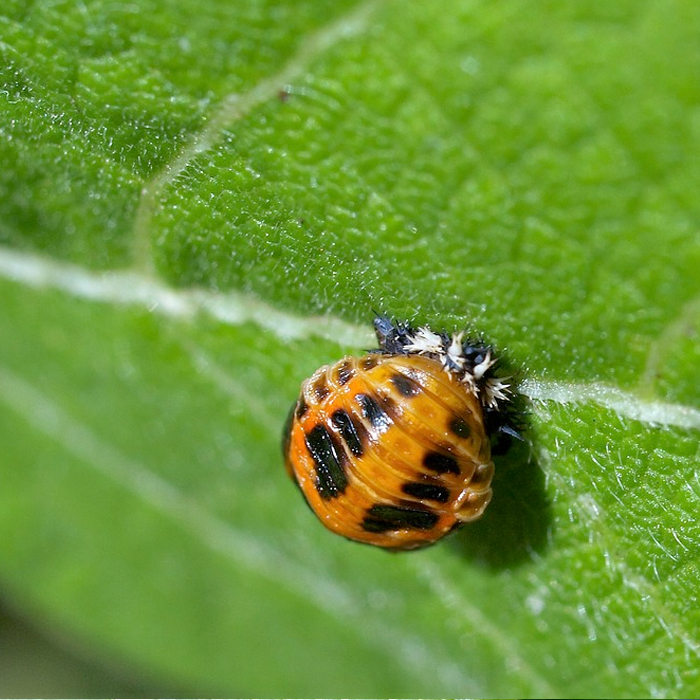
5. Growing up as a beetle.
The ladybug egg is pale yellow at first, fading to white after about five days when the larval stage begins. Not all the eggs are fertile, a system designed to provide food for survivors just in case the aphid colony has moved on when the eggs hatch. The larvae eat their own egg casing and may eat some of the leftover eggs. The tiny larva is pinhead-sized to start out, but soon grows to look like a tiny black and white or yellow alligator. In this stage, it continues to eat up to 30 aphids a day. At the end of this stage, the larva attaches itself to the underside of a leaf and, over the next five days, slowly grows a hard case inside which the ladybug is being formed. From egg to ladybug takes about three weeks. A single ladybug will eat about 5,000 insects in its lifetime of up to three years.
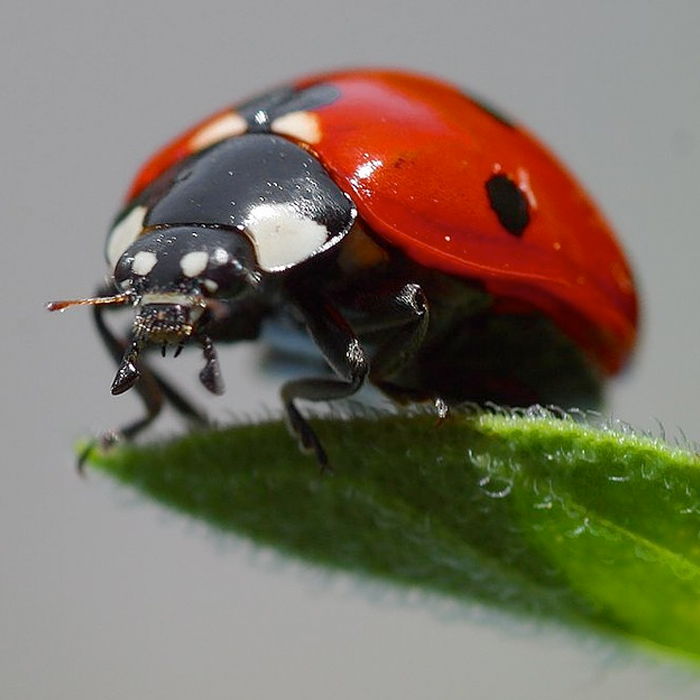
6. Legs for cleaning.
Ladybugs, like all beetles, have six legs and two antennae. The legs are used for walking, climbing and grooming themselves. The antennae are used to touch and smell. Their feet also have a sense of smell. Some ladybugs can give you a hard pinch with their mandibles. Don’t get angry. It’s not malicious. They are just testing the surface they are on.
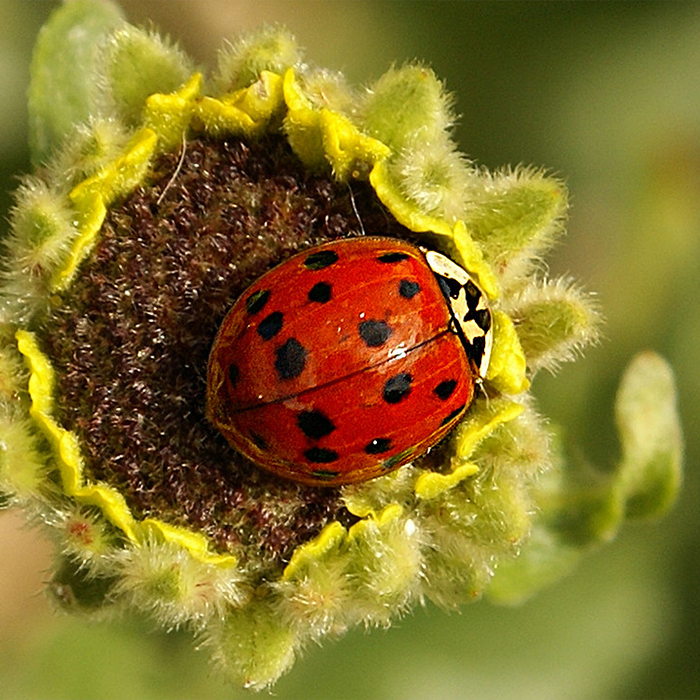
7. Pollen and nectar.
Although bug eaters, pollen and nectar are necessary for young adults to mature. But if they are to lay eggs, they need to eat aphids or other prey and, at the end of the day, they will consume each other if that’s what it takes.
8. “Ladybug, ladybug, fly away home.
You house is on fire and your children are alone.” This tragic verse may have originated in England from the habit of burning harvested hops vines. While the larvae might be able to crawl away from the fire and the adults could fly away, the eggs were stuck on a burning leaf.
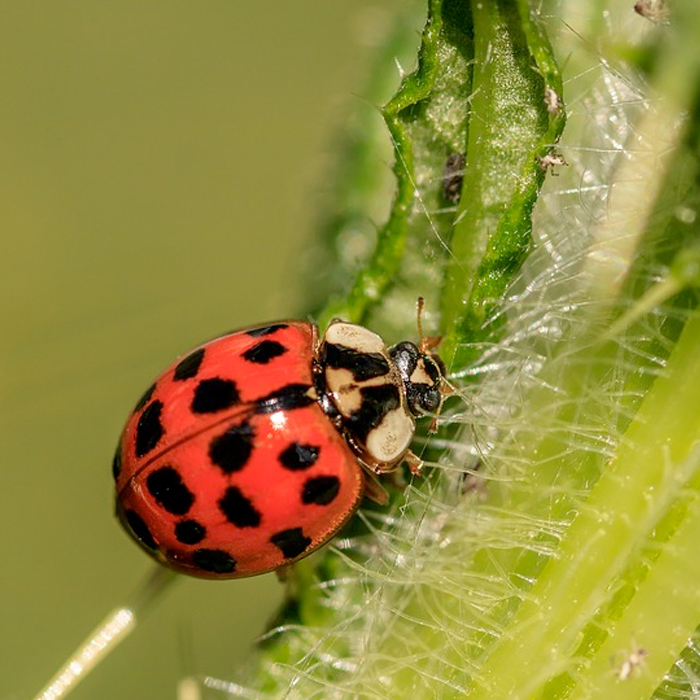
9. Ladybug, ladybug please fly away home.
In 1970, Asian ladybugs, Harmonia axyridis, were imported to North America to help stamp out aphids. Now this very prolific insect has become the dominant species in the country. In fall, they can converge on a sunny wall in great numbers looking for shelter, entering homes through nooks and crannies and basically becoming a great nuisance. If this happens to you, just vacuum them up.
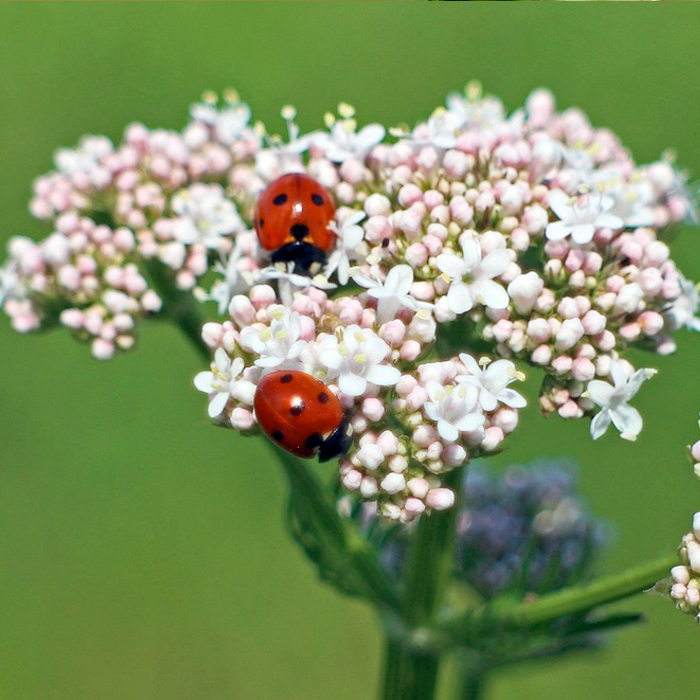
10. Attracting ladybugs.
To attract ladybugs, plant umbellifers such as parsley, fennel, dill, caraway, angelica, tansy, wild carrot and yarrow. They also like goutweed and astrantia. And finally, they say you can fit 80,000 ladybugs in a gallon jar, just in case you’re ever asked.
– Dorothy Dobbie Copyright©
Pegasus Publications Inc.



